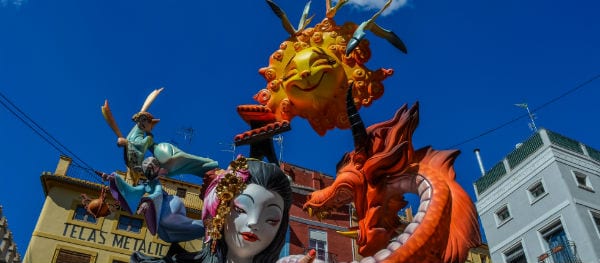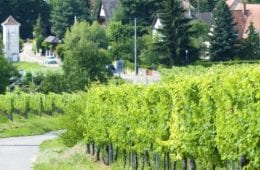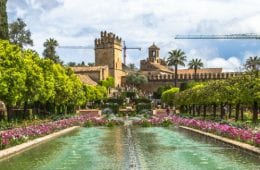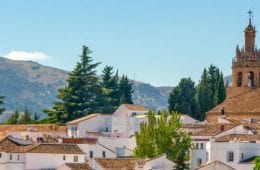Long story short: Valencia – Las Fallas
2 October, 2018
In our ‘Long Story Short’ series, we’ll choose a different interesting region to focus on each time. Sanne and Michèle are visiting some of the most beautiful places on their trip through Andalusia in Spain.
Las Fallas is a traditional festival that is celebrated every year in March, in honour of St. Joseph. It officially begins on the last Sunday in February, and ends on the 19th March. During this period there are special days with various different traditions, but also daily activities. For instance, a “macleta” is lit every day at 14:00 at the town hall. This is a loud firework that explodes with various sounds and rhythms.
The whole city is full of people, tourists as well as locals. Some of the locals will be dressed in traditional festival clothing. The girls and women wear beautiful dresses, and wear their hair in coiled braids at the back or side of their heads. The men wear wide short trousers, a brightly coloured waistcoat and a scarf with a colour denoting the area they come from. Each district and street will have designed and built a statue. These statues are called “Fallas”. And on these “Fallas”, which can be more than 30 metres high, you will see “Ninots.” These are the “Fallas Infantiles”, statues no taller than 2 metres. The “Ninots” are characters. One of these characters is chosen by the public to be displayed in a museum where you can see one of the Ninots every year (a tradition since 1934). The rest of the statues are burned
When we arrived in Valencia, we were very excited. We parked on the promenade by the beach in beautiful weather. The statues were very beautiful, and to be honest we thought it was a shame that they’d all be burned. Once we entered the city on the bus, we discovered that it was quite legal to light fireworks throughout the day. Now I (Sanne) am no fan of fireworks. I did feel quite on edge, also because the city was very busy. We went to the tourist information office and got a map of the city and a guide telling us about all the different activities during the festival.
We did all sorts of free activities in the city: visiting the market hall, the old bath house, the city gate, as well as various squares and the park hosting the Gulliver Park. The park is situated in an old river bed. We walked through it and it was as if there was a sound barrier. We couldn’t hear the festival sounds at all, well, except for the fireworks that were being lit in the park itself. The peace and quiet in the park was in huge contrast to the busy city. We walked from the centre through the park to the famous Palau de les Arts Reina Sofia. From there we walked through a suburb and then back to the boulevard where we’d parked. In the evening we enjoyed the fireworks again, and loved watching the families who had come down to the boulevard to set off fireworks together. I still wasn’t completely at ease with all the banging though, so we decided to leave the city and return when it was a bit quieter!











Latest comments